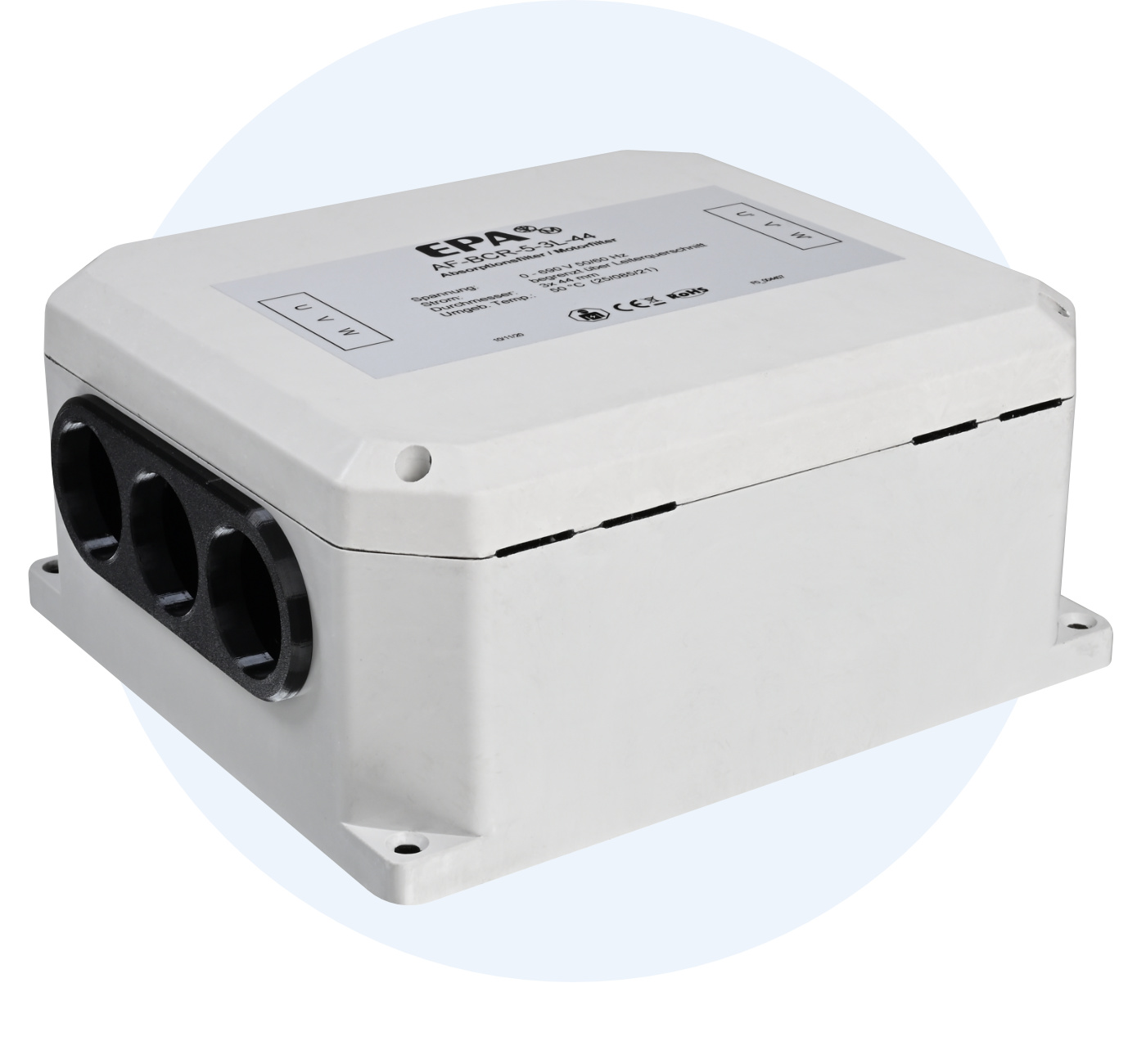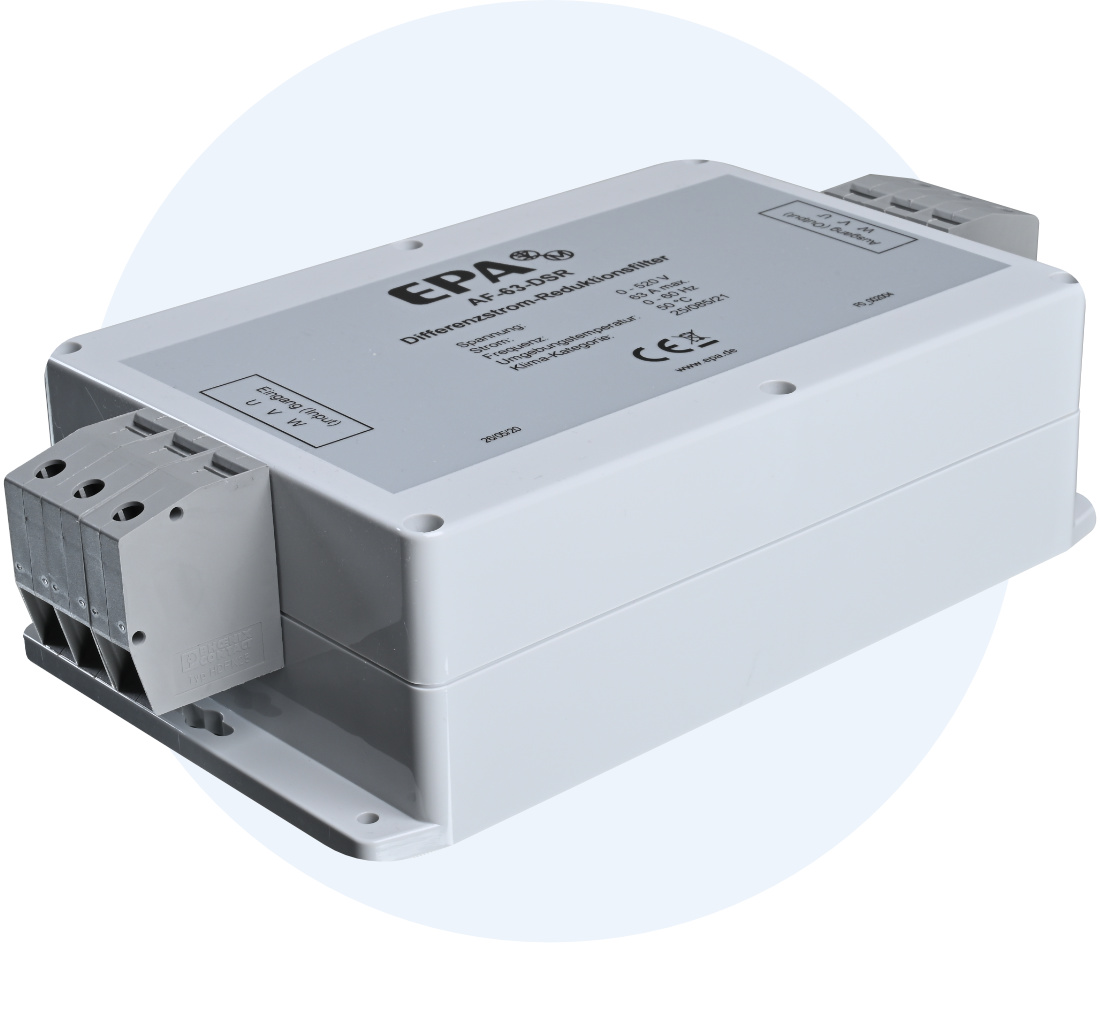
AF-BCR
Absorption filters in order to avoid motor bearing damages
- Nominal currents from 10 A up to 2500 A
- Reduces maintenance and downtimes
- Easy to retrofit
- Flexibly combinable with other RFI filters

AF-DSR
Differential current reduction filters
- Nominal currents from 16 A up to 63 A
- Reduces differential currents
- Reduces maintenance and downtimes
- Easy to retrofit
- Flexibly combinable with other RFI filters
High-frequency voltages from drive controllers are often the cause of accelerated bearing wear on electric motors…
Due to the constantly increasing integration density of the components in the control cabinets, increased parasitic capacitances – in conjunction with the corresponding wiring – are produced against the reference potential, such as the control cabinet housings, PE and “reference ground”.
By the use of electronic drive controllers with a intermediate DC link high “voltage divisions” (du/dt values), also called common mode voltage, occur through the with shor t rise times fastswitching output stages (IGBTs).
In combination with the parasitic capacitances in the system, such as shielded and/or long motor cables or possibly several motors connected to one controller, considerable high-frequency residual currents (common mode currents) arise in the kilo- to megafrequency range out of these high-frequency voltages against the reference potential. The RMS values of these currents can be in the double-digit amperes range, depending on the cabinet layout and the wiring of the machines.
For the most part, they do not flow between the voltage-carrying lines, but on all phases at the same time, galvanically on (shielded) lines or via the bearing of motors, but especially via motor spindles as these have, based on their design, higher capacitance values between the stator and the rotor.
The current flow is then returned to the source of interferences via the reference potential such as the housings, earth and PE connections.
Residual currents do not necessarily flow outside the system. It is quite possible that a residual current circuit breaker upstream of the supply network operates reliably, but considerable residual
currents occur within the machine or facility.
Thus, operational faults such as “bus errors”, “rotary encoder errors” and incorrect input and output signals in controllers, up to the destruction of motor bearings are possible.
Conclusion:
The best residual currents are those that are not present. However, the currently used products in the drive technology do not permit the avoidance of these parasitic currents technically.
Differences and associated bearing currents are a complex and interesting area! Not the drive controller, the structure, the wiring, or even the motor/the motor spindle is the problem itself, but the interaction of the components throughout the whole system, including grounding, RF ground connection, and line routing.
The use of absorbing filter measures to reduce these undesired currents can currently be viewed as a major factor in improving the operational safety of machines and facilities.
The motor bearing current reduction filters EPA AF-BCR are connected to the motor cable between frequency inverter and motor.
Easy retrofitting without great time and cost.